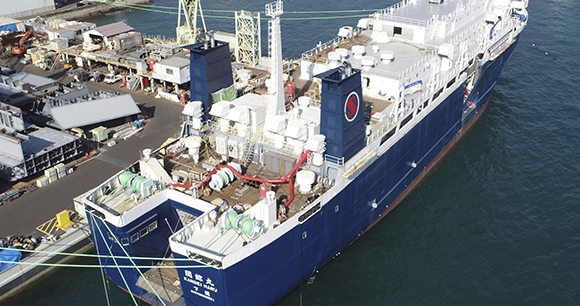The start of summer 2024 signaled a fitful continuation of the commercial whaling still conducted by three nations: Iceland, Norway, and Japan.
Two years ago, Iceland killed 148 fin whales, despite having no domestic market for the meat. (Its sole whaling company, Hvalur hf., relies on Japan to buy almost all the fin whales it hunts.) After a series of shocking welfare abuses were documented that year and the next—resulting in a two-month suspension of Hvalur’s whaling license last summer and only 24 whales killed—it was hoped that Iceland’s fisheries minister would not renew the company’s whaling license in 2024. In early June, however, she decided to permit whaling for this summer only and at a lower level than previous years—128 whales compared to the previous quota of 209. At press time, it was not clear if Hvalur would actually hunt this summer. The company’s CEO indicated he intends to sue the Ministry of Food, Agriculture and Fisheries for revenue supposedly lost due to the ministry’s delay in announcing the decision.

Meanwhile, Norway continues to hunt minke whales in defiance of a four-decades-long ban on commercial whaling implemented by the International Whaling Commission (IWC). There is a disturbing lack of welfare monitoring during these hunts: Norwegian whaling vessels used to have inspectors on board; today, not even electronic recording of the operation is required. So far, fewer whales have been killed than at the same time last year. As with Iceland, demand for whale meat is so low in Norway that the largest of its remaining whalers also depend on exports to Japan (and, sadly, to some extent on curious tourists sampling the meat in shops and restaurants).
After leaving the IWC in 2019, Japan retracted its whaling operation from the high seas to its own territorial waters, where it has taken fewer whales than in recent decades. Despite this, supply continues to surpass demand, and Japan’s whale meat surplus has more than doubled in just five years, reaching an unprecedented 4,800 tons (including 2,000 tons from Iceland) this year.
Despite its precarious financial status, Japan’s last remaining commercial whaling company, Kyodo Senpaku, recently spent more than 7.5 billion yen (~US$46 million) on a new factory ship (pictured above) and lobbied hard for higher whaling quotas, arguing that a greater economy of scale would finally deliver elusive profits. Disappointingly, the government acquiesced, announcing in early June that the company can start hunting 59 North Pacific fin whales a year. This could add another 1,300 tons annually to Kyodo Senpaku’s glut of whale meat and increase its already considerable debts, while threatening the status of a poorly understood population of whales. It may also land the Japanese government in legal jeopardy: Although no longer a member of the IWC, Japan still has a duty under international law to cooperate with the organization, including consulting with the IWC Scientific Committee on Japan’s whaling—a step it failed to take at the committee’s most recent meeting in May, just weeks before Japan made the new quota announcement.